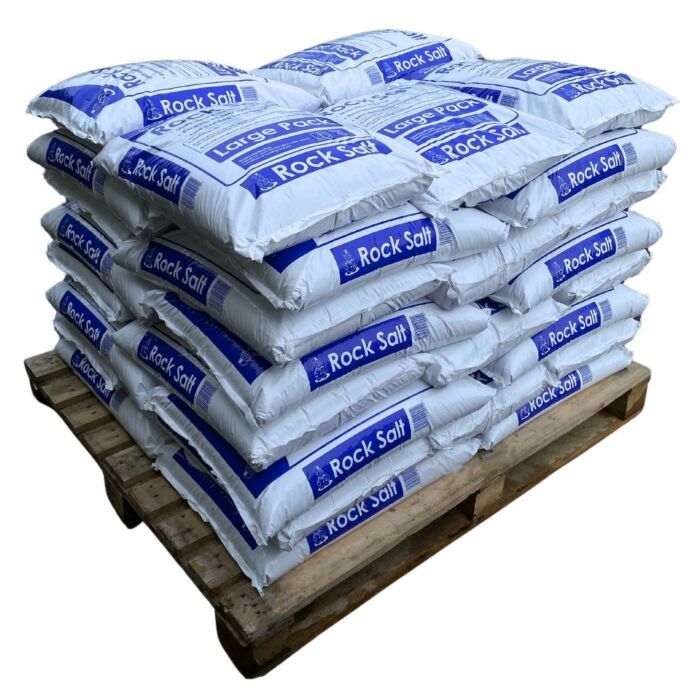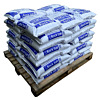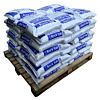
When winter arrives and you need to maintain safe surfaces across your property, understanding bulk measurements becomes essential. Ordering rock salt by the ton is the most efficient way for commercial operations, municipal authorities, and large-scale property managers to procure their de-icing needs. This comprehensive guide explains everything you need to know about ordering tons of rock salt, from calculation to delivery.
Understanding Rock Salt Measurements
Rock salt quantities are typically expressed in metric tons or short tons, depending on your geographic location and supplier convention. One metric ton equals 1,000 kilograms (approximately 2,205 pounds), while one short ton equals 2,000 pounds (approximately 907 kilograms). Understanding which measurement your supplier uses is crucial for accurate ordering.
When purchasing rock salt by the ton, you're buying in bulk quantities that represent significant cost savings compared to retail packaging. For organizations managing multiple properties or large facilities, ton-based ordering provides the most economical approach to winter maintenance supply chain management.
How Much Is a Ton of Rock Salt?
A ton of rock salt represents a substantial quantity. To visualize this, a metric ton (1,000 kg) can fill approximately 50 to 100 standard bags depending on bag size, or alternatively, it might comprise a full pallet or multiple pallets depending on packaging configuration.
For practical purposes, suppliers often package ton quantities as standardized pallet configurations. For example, a
pallet containing 100 bags of 10kg rock salt totals exactly one metric ton. This standardized measurement makes ordering straightforward and eliminates calculation confusion.
Calculating Your Ton Requirements
Determining how many tons of rock salt you need annually involves several factors. First, consider your geographic location and historical snowfall patterns. Regions experiencing heavy, frequent snow will require more salt than areas with mild winters.
Second, calculate the total area requiring de-icing treatment. Include parking areas, driveways, pathways, loading docks, and any other surfaces that must be maintained. Larger properties obviously require more salt than smaller facilities.
Third, consider your application rate. Professional winter maintenance typically applies salt at specific rates measured in pounds or kilograms per thousand square feet. Your application approach, whether conservative (minimal salt, more frequent application) or aggressive (heavier salt application, less frequent), affects your total consumption.
A facility managing 50,000 square feet of paved surfaces in a heavy winter climate might require 3-5 tons of salt per season, while the same facility in a milder climate might need only 1-2 tons. Working with experienced suppliers helps refine these calculations based on your specific situation.
Pallet Configurations and Ton Quantities
Suppliers offer various pallet configurations to meet different ton requirements. Understanding these options helps you order precisely what you need without over-purchasing or facing shortfalls.
The standard one-ton pallet consists of 100 bags at 10kg each. This configuration offers the most economical pricing for this volume level and provides maximum flexibility for handling and application since smaller bags are easier to manage than larger quantities.
Larger facilities often prefer
pallet quantities of 40 bags at 23kg each, totaling approximately 920 kilograms per pallet. These larger bags offer different handling characteristics and may be preferable if you have equipment designed to manage heavier bags.
For multi-ton orders, you might combine various pallet types. For instance, a 3-ton order might consist of two 100-bag pallets plus one 40-bag pallet, or other combinations depending on your specific needs and equipment capabilities.
White Salt Ton Quantities
Organizations preferring white salt over standard rock salt can order by the ton as well. White salt provides superior de-icing performance while minimizing staining and residue, making it ideal for premium properties, hotels, resorts, and facilities where aesthetic appearance matters.
White salt is available in the same pallet configurations as regular rock salt. A
ton of white salt in 100 10kg bag pallets or
approximately one ton in 40 23kg bag pallets provides versatile options for quantity and handling preferences.
Economics of Ton-Based Purchasing
The per-unit cost of rock salt decreases significantly when purchasing in ton quantities compared to retail alternatives. Most suppliers offer volume discounts, with the lowest per-kilogram rates available for multi-ton purchases. Organizations buying multiple tons annually should prioritize finding suppliers with the most competitive ton-based pricing.
For example, retail rock salt might cost $5-8 per bag, while ton-based purchasing might reduce the per-bag equivalent cost to $1-2 depending on quantity and supplier. For an operation consuming 5 tons annually (approximately 500 bags), these savings translate to thousands of dollars in direct procurement cost reductions.
Beyond direct cost savings, ton-based purchasing through reliable suppliers provides supply security. Established supplier relationships with account options ensure priority allocation during peak winter season when demand spikes and availability becomes constrained.
Delivery and Logistics
When ordering tons of rock salt, delivery logistics require attention. Suppliers typically deliver ton-quantities on pallets using standard commercial delivery vehicles. Ensure your receiving facility has adequate space, suitable flooring, and forklift access for pallet handling and placement.
Delivery schedules for ton orders should be coordinated to align with your anticipated usage. Ordering too far in advance risks storage issues if weather doesn't develop as expected. Ordering too late risks delivery delays during peak season congestion. Working with suppliers offering flexible delivery scheduling and multiple ordering windows throughout the season helps optimize your logistics.
Reliable suppliers serving nationwide or worldwide often maintain distributed inventory and delivery networks that provide consistent, timely service. Their established infrastructure ensures that whether you order one ton or fifty tons, deliveries remain dependable.
Storage Planning for Ton Quantities
Storing tons of rock salt requires adequate infrastructure. Each ton on a single pallet occupies roughly 4.5 square meters of floor space. If storing multiple ton pallets, ensure your facility has sufficient area, suitable flooring rated for weight loads (rock salt is heavy), and appropriate weatherproofing to prevent moisture absorption that could reduce product effectiveness.
Indoor storage is ideal but often impractical for large quantities. Covered outdoor storage, such as beneath a temporary structure or tarp, provides adequate protection while offering more economical storage solutions. Ensure storage areas have adequate drainage to prevent water pooling around salt pallets.
Seasonal Ordering Strategies
Strategic timing of ton-based orders affects both pricing and supply security. The optimal ordering window is typically August through October, before the winter season begins and demand peaks. During this period, suppliers have full inventory, delivery schedules aren't congested, and pricing may be more favorable than peak season rates.
Organizations can also benefit from split ordering strategies. Rather than ordering all tons needed in one shipment, some prefer multiple smaller deliveries throughout the season. This approach reduces storage requirements, provides flexibility if weather doesn't develop as expected, and ensures fresher product throughout the season.
Working with Reliable Suppliers
For ton-based purchasing, supplier reliability becomes critically important. You need suppliers with proven track records of consistent delivery, quality assurance, and responsive customer service. They should be able to accommodate your specific ton requirements, offer flexible delivery scheduling, and provide account options for established relationships.
Quality assurance matters significantly when buying tons of rock salt. You want consistent product performance across all pallets delivered. Reputable suppliers maintain strict quality control and can provide specifications regarding crystal size, mineral content, and performance characteristics.
Top-tier suppliers offer comprehensive support beyond just product delivery. They provide
winter management product guidance, technical advice on application rates and methodologies, and recommendations based on historical weather patterns for your specific region. Building a relationship with such a supplier becomes valuable over multiple seasons.
Multi-Ton Orders and Discounting
Organizations ordering multiple tons can often negotiate volume discounts beyond standard pricing. Establishing account relationships with suppliers, providing committed volume forecasts, and consolidating orders can result in additional price reductions beyond standard bulk discounts.
Multi-ton orders also open possibilities for customized solutions. Suppliers might create special pallet configurations combining different bag sizes or product types. For instance, you might receive half your ton order as 10kg bags (for easier handling) and half as 23kg bags (for heavier-duty equipment).
Comprehensive Supply Solutions
While rock salt is your primary winter maintenance product, comprehensive suppliers provide additional solutions worth considering. Beyond tons of rock salt, organizations benefit from suppliers offering
safety equipment, application
tools, and other
equipment options. One-stop suppliers simplify procurement and strengthen supplier relationships.
Conclusion
Ordering rock salt by the ton is the most practical and economical approach for commercial operations, municipalities, and large property managers. Understanding ton measurements, pallet configurations, seasonal ordering strategies, and supplier evaluation criteria enables you to optimize your winter maintenance procurement. By establishing relationships with reliable suppliers capable of delivering consistent quality at competitive pricing, you ensure your operations remain well-prepared for winter weather challenges while maximizing cost efficiency and supply security.












